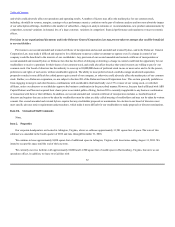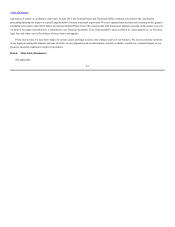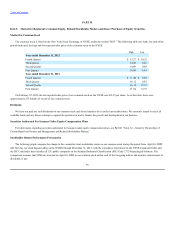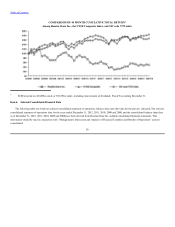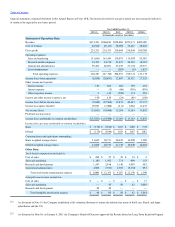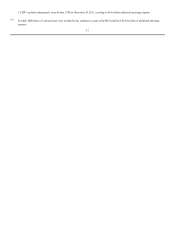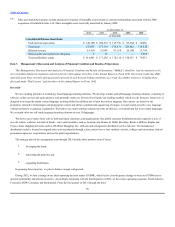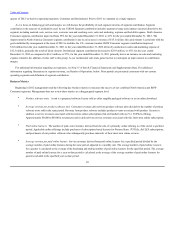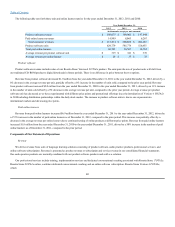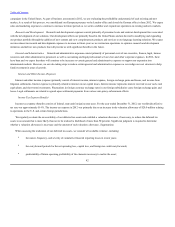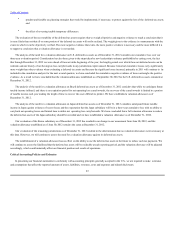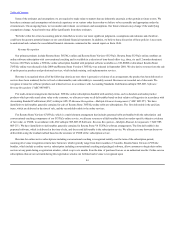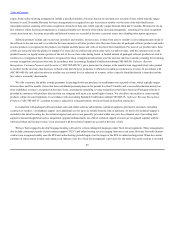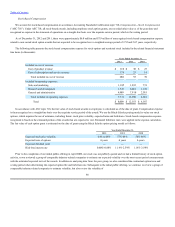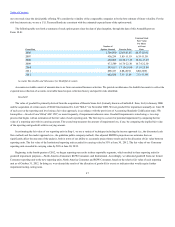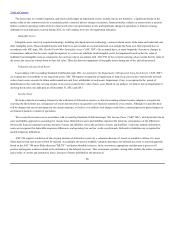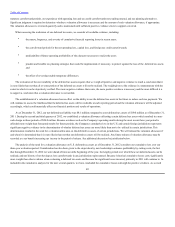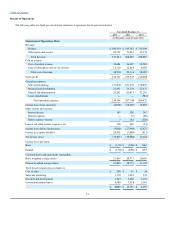Rosetta Stone 2012 Annual Report Download - page 44
Download and view the complete annual report
Please find page 44 of the 2012 Rosetta Stone annual report below. You can navigate through the pages in the report by either clicking on the pages listed below, or by using the keyword search tool below to find specific information within the annual report.
Table of Contents
was released in September 2010, combines product software and dedicated conversational coaching. The content of our product software and
subscription offerings are the same. We offer our customers the ability to choose which format they prefer without differentiating the learning
experience. We bundle time-based subscription licenses of our web-based services with perpetual licenses of our Rosetta Stone language
learning solutions in the North America Consumer market. As a result, we typically defer 10%-35% of each of these bundled sales over the term of the
subscription license.
We sell our solutions directly to individuals, educational institutions, corporations, and government agencies. We distribute our consumer products
predominantly through our direct sales channels, primarily our websites and call centers, which we refer to as our direct-to-consumer channel. We also
distribute our consumer products through our kiosks, which we operate, as well as through select third-party retailers. The majority of our consumer
customers purchase our product software and audio practice products, online software subscriptions and professional services. We sell to institutions
primarily through our direct institutional sales force. Many institutions elect to license our products on a subscription basis. For purposes of explaining
variances in our revenue, we separately discuss changes in our consumer and institutional sales channels because the customers and revenue drivers of
these channels are different.
Our consumer revenue is affected by seasonal trends associated with the holiday shopping season. As a result, our fourth quarter ended
December 31, 2012 accounted for 29% of our annual revenue in 2012. Our institutional revenue is seasonally stronger in the second and third quarters
of the calendar year due to education and government purchasing cycles. We expect these trends to continue.
Cost of product revenue consists of the direct and indirect materials and labor costs to produce and distribute our products. Such costs include
packaging materials, computer headsets, freight, inventory receiving, personnel costs associated with product assembly, third-party royalty fees and
inventory storage, obsolescence and shrinkage. The cost of subscription and service revenue primarily represents costs associated with supporting our
online language learning service, which includes online language conversation coaching, hosting costs and depreciation. We also include the cost of
credit card processing and customer technical support in both cost of product revenue and cost of subscription and service revenue. We believe cost of
revenue will also increase, as a percentage of revenue, in future periods as a result of our launch of Rosetta Stone Version 4 and
solutions in our international markets, which includes services that have higher direct costs to deliver to customers than previous versions of our
product. However, we are also exploring additional measures to further address coaching costs, including limiting the number of studio sessions in our
Version 4 offering, and unbundling such sessions from our product software offering.
We classify our operating expenses into three categories: sales and marketing, research and development and general and administrative.
Our operating expenses primarily consist of personnel costs, direct advertising and marketing expenses and professional fees associated with
contract product development, legal, accounting and consulting. Personnel costs for each category of operating expenses include salaries, bonuses,
stock-based compensation and employee benefit costs.
Our sales and marketing expenses consist primarily of direct advertising expenses related to television, print, radio, online
and other direct marketing activities, personnel costs for our sales and marketing staff, rental payments for our kiosks and commissions paid to our sales
personnel. We intend to continue to expand our sales activities within some of our existing regions as well as to expand our presence into new
countries, in addition to expanding our media and advertising
41


